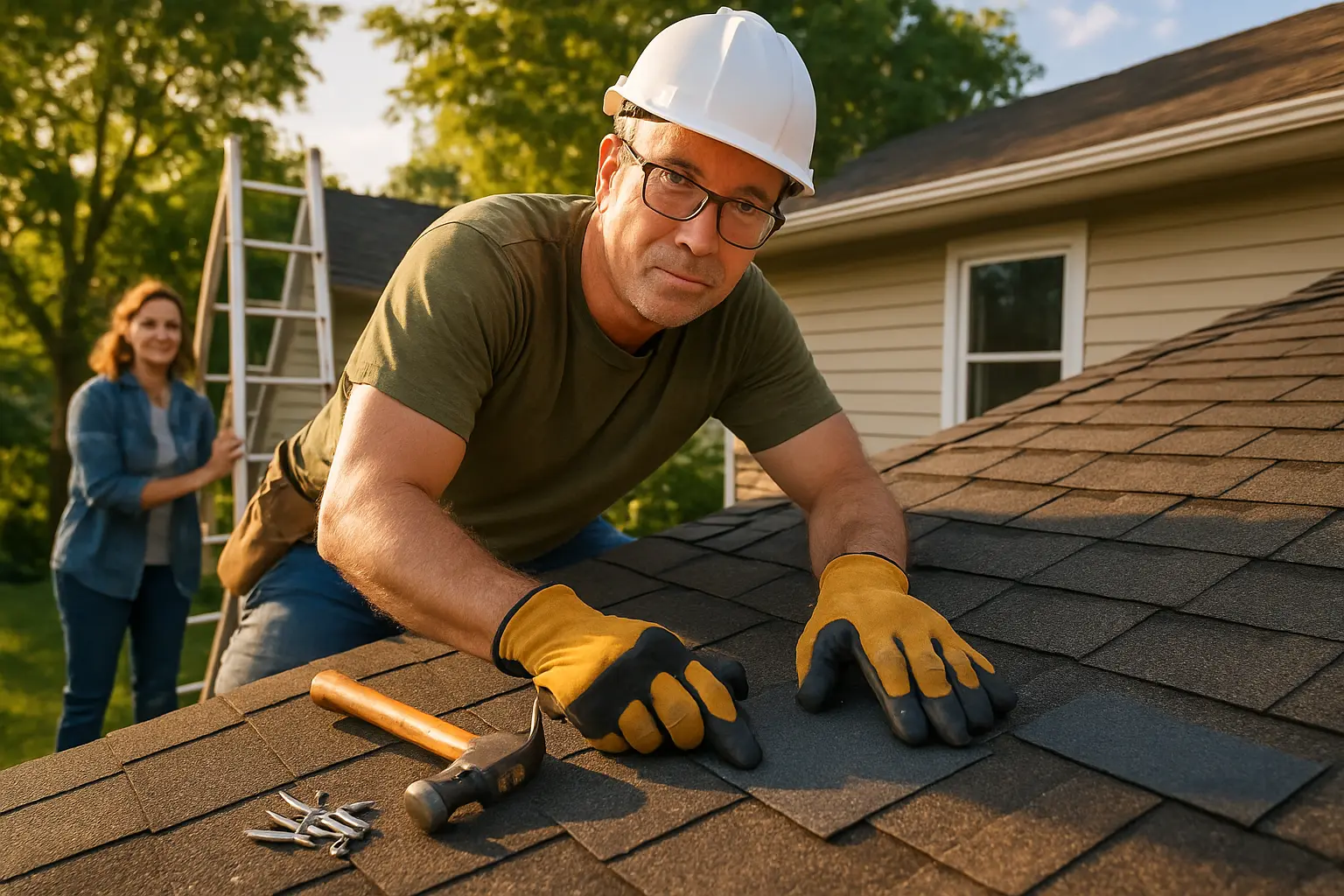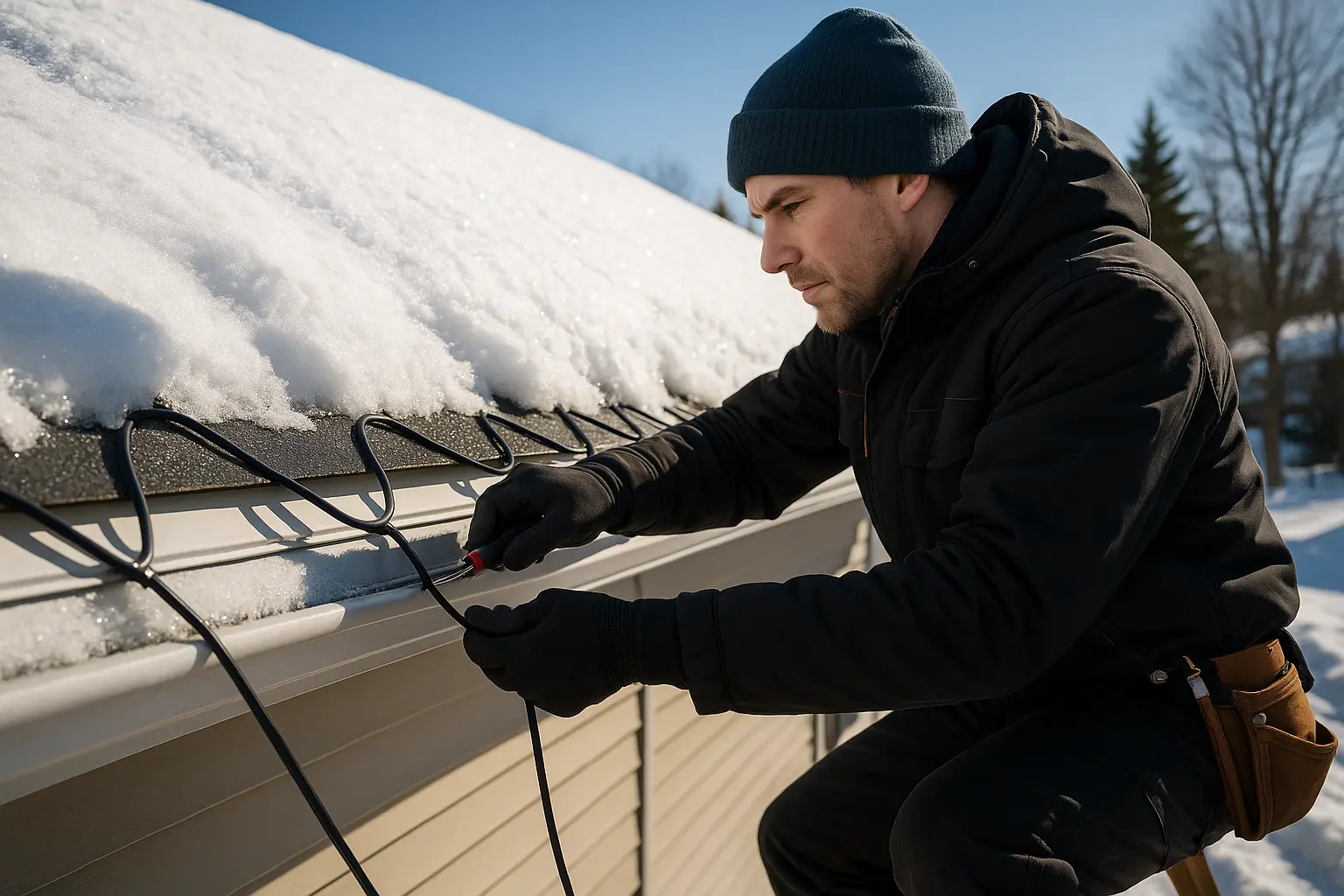Introduction to All-Season Roofing
Your roof faces an ever-changing set of challenges throughout the year. With each season comes a unique array of weather conditions and concerns that demand a custom approach to care. Whether you experience heavy winter snows, scorching summer heat, crisp fall breezes, or refreshing spring showers, knowing how to tailor your roof upkeep is key. By following a thoughtful, season-specific management plan, you protect not only your roof but also the home’s overall structure. In this guide, we delve into effective strategies, handy examples, and practical advice to help you master the art of seasonal roof maintenance while keeping your home secure.
Integrating a routine for seasonal roof maintenance can turn a daunting task into a manageable, regular habit. Remember, small adjustments and regular checkups each season are the backbone of lasting protection.
Spring Roof Maintenance
Inspect for Winter Damage
Spring arrives as a signal to closely examine your roof following the harsh winter. During those cold months, snow and freezing conditions can stress your roof in unexpected ways. Look carefully for any broken or shifted shingles, as well as hidden leaks that might have developed under the weight of accumulated ice. Walk around your home, and if needed, use binoculars to check high spots—pay attention to the ridge lines and edges where damage can be subtle.
Freeze-thaw cycles during winter can lead to minor cracks in asphalt surfaces or gaps around details such as skylights and chimneys. Addressing these issues while they’re small can prevent bigger problems later. For example, one homeowner in Maine discovered an early leak during a spring check and managed to repair it before it escalated into a larger, costlier issue.
Clean Gutters and Downspouts
The arrival of spring showers makes it important to ensure your gutters and downspouts are clear. Over the winter, debris like leaves, twigs, and dust can accumulate, causing blockages that stop water from properly flowing away from the roof and foundation. Clogged gutters can lead to water seeping into roof layers or even the interior walls if left unchecked.
Spend some time removing the clutter by hand or with a cleaning tool designed for gutters. Many homeowners opt for installing gutter guards to reduce buildup, especially in areas with dense foliage. Professionals often recommend that such drainage maintenance be a regular item on your seasonal roof maintenance checklist to keep every component of the system functioning smoothly.
Trim Overhanging Branches
As trees blossom in spring, branches can grow closer to your roof, posing a risk with every breeze. Overhanging limbs might scrape against the roofing materials, gradually eroding their protective coatings and possibly causing severe damage during a storm. To prevent this, trim any branches that extend too near your home.
If you’re uncertain about the best way to trim safely or are dealing with large branches, it’s wise to call an arborist. A suburban neighborhood in Virginia once saw significant prevention of potential roof damage simply by proactively trimming nearby tree limbs before a storm hit.
Summer Roof Care
Check for Sun Damage
Summer introduces its own set of challenges for roof upkeep. The high UV exposure and intense heat can cause the roofing materials to age quickly. Shingles might become brittle and crack, and colors may fade. A careful inspection during the summer helps in spotting early signs of sun-related wear such as discoloration and brittleness on asphalt surfaces.
Applying a protective roof coating can serve as an extra shield against UV rays. Such coatings not only minimize heat absorption—thus lowering your cooling bills—but also extend the life of your roof. Homeowners in the southwestern U.S. have noted marked improvements in energy efficiency after treating their roofs with these reflective layers.
Inspect for Storm Damage
Summer storms often come with heavy rains, strong winds, and even hail. These factors can inflict unpredictable damage on your roof; for instance, shingles might crack or shift, and even metal elements may show signs of dents. After any major storm, take time to inspect your roof thoroughly for signs such as dents, bruising, or any gaps where water might be infiltrating.
Timely repairs are crucial to prevent small issues from evolving into major problems. In Florida, several homeowners discovered that minor hail impacts noticed early allowed them to make prompt repairs, ultimately saving on expensive future repairs. This kind of swift action is a cornerstone of true All-Season Roofing.
Ensure Proper Ventilation
Effective ventilation plays a huge role in protecting your roof during the hot months. Inadequate airflow in your attic can lead to a build-up of heat, which might warp shingles and increase cooling costs. Properly installed ridge vents, soffit vents, or even attic fans keep the air circulating, reducing the risk of damage and lowering energy expenses.
A case in a warmer region highlighted that poor ventilation could lead to early roof deterioration, forcing a premature roof replacement. Ensuring proper attic airflow not only defends against heat damage but also helps in curbing moisture buildup, which could foster mildew or mold growth.
Fall Preparation
Clear Gutters of Leaves
Fall brings with it a burst of color—and a lot of leaves. These leaves can quickly pile up and clog your gutters if not routinely cleared out. Clogged gutters may cause water to back up and seep under roofing materials, eventually risking structural damage to your home’s foundation.
A regular gutter cleaning schedule during fall, whether weekly or monthly, is a smart move. This foresight ensures that when heavy rains or early snowfalls hit, your water channels can handle the influx with ease. In fact, many homeowners find that frequent cleaning results in fewer leaks and less structural water damage over time.
Inspect Roof Flashing
Flashing is the unsung hero of your roof, directing water away from vulnerable spots like chimneys, vents, and skylights. As fall approaches, it’s essential to examine the flashing for any signs of rust, loosening, or deterioration in the sealant. Proper flashing helps prevent water from seeping into your roof’s interior, which could lead to larger repairs down the road.
Regular checks and occasional professional maintenance to reseal or replace faulty flashing can significantly reduce the risk of leaks during wet weather. One Oregon family, for example, saw a dramatic drop in leak incidents after updating their flashing, which in turn saved them from extensive repair costs later.
Schedule a Professional Inspection
While many tasks can be tackled on your own, there are moments when an expert’s eye is invaluable. A professional roofing inspection can reveal hidden issues such as minor sagging, insulation problems, or even potential leaks that aren’t obvious at first glance.
Booking a professional visit in the fall is a proactive strategy to iron out any issues before winter intensifies. One case in Michigan demonstrated that a seemingly minor leak, when professionally inspected, turned out to need several important repairs—actions that spared the homeowner from a major winter ordeal.
Winter Roof Management
Remove Snow Buildup
Winter poses perhaps the most considerable challenges to your roof. Heavy snow can strain the structure, and when it melts, ice dams may form along the edges of the roof. Removing excess snow using a gentle roof rake can prevent these problems without risking damage to your roofing material.
When clearing snow, always consider the nature of your roofing material. Follow manufacturer guidelines and, if necessary, consult with a professional to select the best tools and methods. For instance, a Colorado homeowner maintained a strict snow-removal routine that prevented ice dams while avoiding the high repair costs linked to water leakage.
Address Ice Dams Promptly
Ice dams are a serious winter threat that can lead to water pooling beneath your roofing material. These form when melting snow refreezes at the roof’s edge, blocking proper drainage. Adequate insulation and ventilation in your attic greatly reduce the risk of ice dam formation by minimizing unwanted temperature gaps on your roof.
If ice dams do appear, it’s important to remove them quickly with appropriate tools or professional help. A homeowner in New York improved their attic insulation and managed prompt ice dam removal, thereby avoiding recurring damage. Taking swift action is an essential part of a sound All-Season Roofing strategy.
Monitor for Leaks
During winter, leaks can become more pronounced due to the buildup of moisture and condensation. Even the smallest leak can lead to water stains or, worse, mold if it goes unnoticed. Be sure to regularly check your attic and ceilings for signs like damp spots or unusual odors.
Early detection and repair are key to keeping the integrity of your roof intact. Document any leaks so you can discuss these spots with your contractor, ensuring that even the smallest issue is resolved before it expands into a bigger problem.
All-Season Roofing Tips
Across all the seasons, embracing the principles of All-Season Roofing in your home care routine can make a significant difference. Whether it’s mulching preventative measures or scheduling professional inspections, placing a focus on every detail ensures that your roof withstands whatever nature sends your way. Using the insights shared in this guide, from spring cleanups to winter safeguards, you can confidently maintain a roof that performs admirably year after year.
This balanced approach, combining regular checks and professional expertise, reinforces the importance of seasonal roof maintenance and adds to the longevity of your home.
Remember: incorporating the mindset of All-Season Roofing in your routine not only preserves your roof’s performance but also saves you money in the long run by preventing costly repair bills.
Conclusion
Caring for your roof throughout the year is essential to protecting your home from the elements. Whether it’s the careful inspections in spring, managing the sun and storms in summer, cleaning and resealing in fall, or vigilant snow and leak control in winter, each season presents its own set of hurdles. The concept of All-Season Roofing is all about tailoring your maintenance routine to meet these diverse challenges, ensuring that your roof remains strong regardless of the weather.
By making small, thoughtful adjustments—like cleaning gutters, trimming encroaching branches, applying protective coatings, and improving ventilation—you can extend the life of your roof significantly. Such proactive steps, along with timely professional inspections, help secure the safety of your home while offering long-term financial benefits.
Embrace the comprehensive approach of All-Season Roofing, and take comfort in knowing that your home is well-prepared for every season. With careful planning and consistent care, you’re not just maintaining a roof; you’re investing in the longevity, safety, and value of your home. Enjoy peace of mind all year long by keeping your roof in optimal shape through smart, seasonal management practices.





